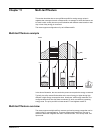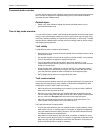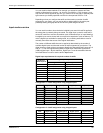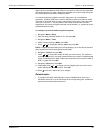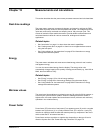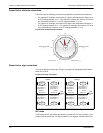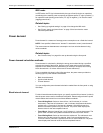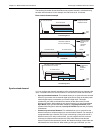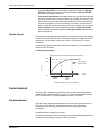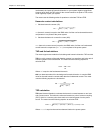
PowerLogic™ PM5500 series user manual Chapter 12—Measurements and calculations
HRB1684301-01 111
IEEE mode
In IEEE mode, the PF sign is determined by the type of load (inductive or capacitive)
contributing to the reactive power component of apparent power. PF sign is positive (+)
for capacitive loads (leading power factor). PF sign is negative (-) for inductive loads
(lagging power factor).
Related topics
• See “Setting up regional settings” on page 44 to change the HMI mode.
• See “Power, energy and power factor” on page 139 to learn how the meter
calculates power factor.
Power demand
Power demand is a measure of average power consumption over a fixed time interval.
NOTE: If not specified, references to “demand” is assumed to mean “power demand”.
The meter measures instantaneous consumption and can calculate demand using
various methods.
Related topics
• See “Demand setup” on page 40 to set up demand using the front panel.
Power demand calculation methods
Power demand is calculated by dividing the energy accumulated during a specified
period by the length of that period. How the power meter performs this calculation
depends on the method and time parameters you select (for example, timed rolling
block demand with a 15-minute interval and 5-minute subinterval).
To be compatible with electric utility billing practices, the power meter provides the
following types of power demand calculations:
• Block interval demand
• Synchronized demand
• Thermal demand
You can configure the power demand calculation method from the front panel or using
ION Setup.
Block interval demand
For block interval demand method types, you specify a period of time interval (or block)
that the power meter uses for the demand calculation. Select/configure how the power
meter handles that interval from one of these different methods:
• Timed Sliding Block: Select an interval from 1 to 60 minutes (in 1-minute
increments). If the interval is between 1 and 15 minutes, the demand calculation
updates every 15 seconds. If the interval is between 16 and 60 minutes, the
demand calculation updates every 60 seconds. The power meter displays the
demand value for the last completed interval.
• Timed Block: Select an interval from 1 to 60 minutes (in 1-minute increments). The
power meter calculates and updates the demand at the end of each interval.
• Timed Rolling Block: Select an interval and a subinterval. The subinterval must
divide evenly into the interval (for example, three 5-minute subintervals for a
15-minute interval). Demand is updated at the end of each subinterval. The power
meter displays the demand value for the last completed interval.



